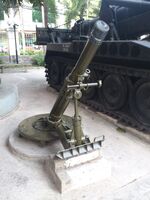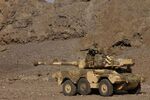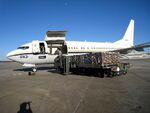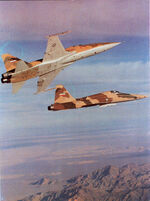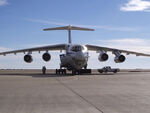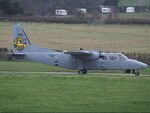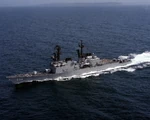|
| Headquarters: | Mexica, DCF |
| Commander-in-Chief: | President Felipe Calderon |
| Secretary of Defence: | Secretary of National Defense Luis Cresencio Sandoval |
| Commander: | Admiral Vidal Francisco Soberón Sanz |
| Chief of Staff: | General Salvador Cienfuegos Zepeda |
| Branches: | Army, Navy |
| Active personnel: | 174,000 (Army); 80,000 (Navy) |
| Reserve personnel: | 83,000 (Army); 8,000 (Navy) |
| Annual budget: | M$ 28.4 billion (2022) |
| In % of GDP: | 1.8% |
| Founded in: | 1821 |
| Reorganized in : | 1914 (From the Federal Army) |
| Ages qualified for service: | 18 |
| Available for service: | 22,541,654 Men; 25,149,027 Women |
| Fit for service: | 18,273,128 Men; 19,750,687 Women |
| Reaching age / yr: | 461,045 Men; 506,352 Women |
| Conscription law: | Yes |
| Time of service: | One year, if selected |
| Domestic suppliers: | AAMSA, ASTIMAR, DGIM, DINA, Ford, SEDENA, TNCA |
| Supplying countries: | Brazil, CANZ, USSR, Victoria |
| Annual arms exports: | M$ 55 million (2020) |
| Annual arms imports: | M$ 120 million (2020) |
| Historical articles on wiki: | Military history of Mexico |
| Rank articles on wiki: | Military ranks of Mexico |
The Mexican Armed Forces (Fuerzas Armadas de México) are the military force of the United Mexican States. The Mexican Armed Forces are divided into two primary service branches, the Army and Navy. The Air Force falls under the command of the Army, while the Navy maintains Naval Aviation and Naval Infantry organizations.
History[]
Pre-Doomsday[]
See: Military history of Mexico
Mexico was part of the Non-Aligned Movement prior to Doomsday, focusing on decolonization and limiting influence of the American and Soviet blocs on regional politics.
Post-Doomsday[]
While Mexico was not directly targeted by Soviet nuclear weapons on Doomsday, it was still affected by the destruction of El Paso, San Diego, and Tucson. The blasts on these cities released radioactive debris that drifted across northern Mexico. Additionally, firestorms in San Diego and El Paso swept across the borders into Tijuana and Ciudad Juárez, resulting in both cities burning to the ground, despite efforts from Mexican firefighters and military personnel attempting to save the cities.
In the years after Doomsday, the Mexican government estimated that 280,000 people died in Tijuana and Ciudad Juárez on Doomsday from the nuclear strikes on San Diego and El Paso. An additional 400,000 to 500,000 people died in the years after Doomsday from cancer, lung disease, or other problems triggered by the pollution released from the cities or the effects of being exposed to high doses of radiation.
The Mexican Armed Forces were placed on high alert and a company of armored cars and an infantry battalion were deployed to the Mexico-Guatemala border as the federal government expected spillover from the Guatemalan Civil War.
1984-1992[]
The Mexican Navy was ordered to secure American oil rigs in the Gulf of Mexico to prevent them from falling into Cuban hands. When communication resumed with President Ronald Reagan in late 1983, the American president authorized the Mexican government to take control of the oil platforms as a stop-gap measure until the authorities could determine the next steps in the United States.
However, this brought the country into direct conflict with the Cuban government, which had occupied several platforms, executing the crews, or leaving them adrift in lifeboats without supplies. Several skirmishes occurred, with the Quetzalcoatl and smaller vessels taking damage from Cuban vessels, sinking a gunboat in retaliation.
Mexican Army and Air Force units were involved in efforts to contain American refugees attempting to enter the northern parts of the country. F-5 Tiger light fighters and T-33 Shooting Stars trainers intercepted civilian aircraft that had fled south from the United States and a handful of larger aircraft from Canada. Army personnel utilized the various border checkpoints and took command from the remaining United States Customs and Border Patrol agents, who were overwhelmed by refugees. While the agents attempted to remain involved, Customs and Border Patrol was completely forced out of the regions by late 1983.
To prevent a humanitarian crisis in the country, President Miguel de la Madrid ordered the border be closed in December, 1983. Additional Army personnel as well as law enforcement officers from the Federal Police were stationed to the prevent the continued entry of Americans illegally into the country. The Mexican Army and Red Cross were sent to the border communities of Andrade, Calexico, and Tecate in California; Douglas and Nogales in Arizona; Santa Teresa in New Mexico; as well as Laredo, Los Indios, Mission, Rio Grande City, and Tornillo in Texas.
These communities were utilized as refugee centers, and several ballooned in population with Calexico, Laredo, and Mission nearly tripling in population with sprawling tent cities forming.
On the water, refugees from Florida and Louisiana, as well as Texas, inland states up the Mississippi River, and the Pacific Coast utilized boats to cross to various ports and even the undeveloped coastline. Many vessels were not designed for deep water operations and floundered in the Gulf, others were intercepted by the Mexican Navy and saw the passengers deported back to the United States on what was frequently a death march, and others managed to sneak into Mexico or were captured by cartels.
Two controversial incidents resulted in the inclusion of surviving American diplomatic, law enforcement, and military personnel in border policies.
The first involved a Cessna 172 with a family attempting to cross the border on November 7th, 1983. The Mexican Air Force detected the plane and dispatched two F-5 Tiger fighters to escort the plane back into the southern United States. The pilot attempted to land at Chihuahua International Airport before being intercepted and forced to abort the landing. The Air Force ordered the plane back to Texas, to which the pilot refused and diverted to Nuevo Casas Grandes Municipal Airport. The pilot refusing to follow orders and was shot down by one of the fighters, killing all the occupants.
The second was a cluster of reports from the Mexican Red Cross that Mexican Army soldiers were robbing and assaulting survivors. While the military denied it, in 2004 a Congressional inquiry released a document indicating that the reports, initially denied, were true.
These reports, as well as other incidents of assaults, theft, and crimes going without prosecution resulted in several dozen complaints being filed by the American embassy in Mexico City. However, in 1985, after news reports brought the severity of the crime to light, the Mexican government agreed to cooperate with various surviving law enforcement agencies as well as Customs and Border Patrol agents who had all been relegated to policing the refugee communities.
1993-2009[]
As the Republic of Texas
2010-present[]
The Republic of Texas
While Mexico has steadfastly remained unaligned with the Commonwealth of Australia and New Zealand, the South American Confederation, and the Union of Sovereign Socialist Republics, the nation maintains relatively good relations with the three major powers. Within the region, Mexico remains allied with the Republic of Texas and has worked to influence nations in the former southwestern United States. Mexico has seen some tension with Cuba as the country frequently harasses Mexican shipping to the USAR and Florida in the region.
While not formally allied with the Caribbean Federation, Mexico has lent support to the organization and participated in drug interdiction actions in the Gulf of Mexico.
The military has also begun coordinating with the Atlantic Defense Community to help improve maritime safety between Europe and the Americas, as well as supported efforts from the Torrington based United States to help stabilize the Pacific Northwest. It also has cooperated with the Commonwealth of Victoria and the Republic of French Southern Territories in missions across the Pacific Ocean.
Army[]
The Mexican Army (Ejército Mexicano) is responsible for ground warfare and is the largest branch of the armed forces. It is also the oldest branch of the United Mexican States Armed Forces, tracing its lineage to military formations in the Mexican War of Independence.
Infantry[]
The standard issue rifle is the Heckler & Kock HK33 assault rifle and the Heckler & Koch G3 battle rifle, both of which were manufactured prior to Doomsday under license agreements with West Germany. Under agreements between the American Provisional Administration, Mexico purchased the rights to produce the M16 assault rifle, however, these have only entered limited service with special operations and the military police.
At a fire team level, the FN Minimi is deployed as a squad automatic weapon. Unit commanders and officers are also frequently issued the M1911 pistol. Other weapons include the HK PSG1 sniper rifle, the Rheinmetall MG3 general purpose machine gun, M2 Browning heavy machine gun, Mk.19 grenade launcher, Carl Gustav and M40 recoilless rifles, and the MILAN anti-tank guided missile launcher.
Anti-personnel and smoke grenades are also in use. The M67 fragmentation hand grenade is domestically manufactured as the primary grenade issued to infantry. The M18 smoke grenade is utilized for screening as well as marking targets and is manufactured domestically with parts imported from the Commonwealth of Australia and New Zealand.
Mechanized Infantry[]
The Army operates four mechanized infantry battalions, two operating modernized AMX DNC-1 dual role armored personnel carriers and infantry fighting vehicles, one deploying Panhard VCR wheeled armored personnel carriers, and two deploying the Sedena Henschel HWK-11. Infantrymen carried by the vehicles are armed in a similar fashion to the light infantrymen.
The AMX DNC-1 (internationally known as the VCI) serve as both armored personnel carriers and infantry fighting vehicles and are armed with a 20 mm F2 autocannon as the main armament and either a M2 Browning heavy machine gun or a MG3 general purpose machine gun as a secondary weapon. With its heavier weapons, the VCI can also be deployed as an infantry fighting vehicle, trading passenger space for additional ammunition.
The Panhard VCR are armed with either a M2 heavy machine gun, MG3 general purpose machine gun, or a MILAN anti-tank guided missile launcher. Typically a platoon operates three Panhard VCR’s armed with a general purpose or heavy machine gun and one armed with a MILAN anti-tank guided missile launcher.
The Sedena Henschel HWK-11 armored personnel carrier is armed with a M2 heavy machine gun or a MG3 general purpose machine gun. While one vehicle was armed with a M621 autocannon, the variant did not enter production. However, the modified design was utilized as the foundation for the Sedena Henschel HWK-25.
Artillery[]
The Mexican Army relies on a mix of various pre-Doomsday howitzers and mortars to provide fire support for infantry and armored action and domestic versions of pre-Doomsday inventory. In the light howitzer role, the army utilizes two types of 105 mm howitzers including the M101 and OTO Melara Mod 56. Field howitzers are all 155 mm and include two types; the M114 and the M198.
Mortars include the 106 mm M30 heavy mortar; two models of 81 mm medium mortars, the M29 and the Mortero 81; and the 60 mm Mortero M60 light mortar. The M29 is being phased out in favor of domestically manufactured Mortero 81. The M2 light mortar was completely replaced by 2017 with the Mortero M60.
Artillery are organized into nine artillery regiments and eight mortar regiments, equipped with the medium and heavy mortars. Light mortars are deployed by infantry regiments.
Armored Cavalry[]
Prior to Doomsday, the Mexican Army had very limited armored cavalry resources. All of its armored forces consisted of 42 Panhard ERC 90 armored cars, armed with a 90 mm anti-tank gun. It lacked tanks or infantry fighting vehicles as the country was focused on fighting lightly armed insurgents and drug cartels.
Since Doomsday, it has seen some equipment acquisition, improving the armored capabilities and fire support. In 2004, the Army purchased thirty-nine EE-9 Cascavel armored cars from Brazil to provide slightly more capabilities to provide improved armored support and maneuverability to infantry formations. The AMX DNC-1 has also been seen utilized in an infantry fighting vehicle role and maneuvering with tanks during counterinsurgency operations in the Yucatan and former southwestern United States.
In 2008, after fighting spilled over from Central America into southern Mexico, armored units responded to provide heavier fire support to ground forces. Three Panhard armored cars and two Cascavel armored cars were destroyed by Yucatan insurgents. After these events, Mexico purchased 120 EE-T1 Osório main battle tanks from Brazil, opting for the 105mm L7 cannon over the 120mm G1 cannon. Mexico now deploys two tank battalions, one infantry fighting vehicle battalion, and three armored car companies.
Military Police[]
Mexico operates one military police regiment responsible for law enforcement within the ranks of the Armed Forces as well as security on military installations and communities facing sectarian violence. The branch oftentimes uses military working dogs to support patrol and reconnaissance missions.
Support[]
Mexico maintains several regiments for support of the Army. The supporting units include five logistics regiments, five maintenance regiments, six medical regiments, and three other supporting regiments.
Air Force[]
The Mexican Air Force (Fuerza Aérea Mexicana) is the primary aerial warfare branch of the Mexican Armed Forces and is subordinate to the Army. Its goals are to defend the integrity, independence, and sovereignty of Mexico. It is also responsible for internal security and disaster relief as well as supporting Army foreign peacekeeping deployments.
In 2006 as the Air Force saw an increase in capabilities with new aircraft from Brazil, it was reorganized into five operational groups. Each group is responsible for directing and maintaining cohesion and equipment readiness of the aircraft assigned.
Surveillance Group[]
The Surveillance Group is responsible for conducting overland patrol, electronic warfare operations, and signal intelligence operations. It operates a mix of airborne and ground based assets, including three BN-2 Islanders, fitted with SIGNIT equipment from Brazil; two Embraer ER-120 Brasilia airborne early warning and control aircraft, and six ground control stations to monitor foreign communications.
Combat Aviation Group[]
The Combat Aviation Group is the combat arm of the Air Force and is responsible for aerial combat, air defense, patrol, and strike missions. The Mexican Air Force operates the F-5E/F Tiger as its main fighters, Embraer AMX attack aircraft, and the Pilatus PC-7 as counterinsurgency aircraft. While the Lockheed T-33 Shooting Star is primarily deployed as a jet trainer, it still operates in a limited capacity as an interceptor along the Mexican-Texan border. Additionally, the SIAI-Marchetti SF.260 while functionally a basic trainer, maintains hardpoints to support counterinsurgency operations if necessary.
Logistics and Mobilization Group[]
The Logistics and Mobilization Group is responsible for troop transport, equipment and personnel movement, and aerial refueling operations. The group operates a variety of utility, medium, and heavy transport aircraft with a mix of airplanes and helicopters. Utility aircraft include the EMB 110 Bandeirante, BN-2 Islander, and the Shrike Commander 500S while heavier transportation are handled by both medium and strategic airlift capabilities and include the C-130K Hercules, L-100 Hercules, and Ilyushin Il-76. Helicopters operated include the Bell 206 and 212 for utility duties, the Eurocopter AS532 Couger, Mil Mi-17, and Aérospatiale SA330 Puma for medium transportation, and the Mil Mi-6 for heavy transportation. Aerial refueling is handed by three Ilyushin Il-76MDK aerial refueling aircraft.
Special Air Transportation Group[]
The Special Air Transportation Group is responsible for movement of the President of the United States of Mexico and other VIP’s or diplomats within country or abroad. It operates two Boeing 737 business jets for international travel, two Gulfstream III regional jets for regional or domestic travel, and two Aérospatiale SA 330 Puma for domestic transportation or movement within a host country lacking fully developed airfields and roads.
Training Group[]
The Training Group is responsible for pilot and ground crew training as well as managing the Air Force Academy in Zapopan. Basic trainers include the Pilatus PC-7 and the SIAI-Marchetti SF.260 turbopropeller aircraft for fixed wing trainees and the Bell 206 light helicopter for rotary wing trainees. Fighter and transport trainees utilize the Lockheed T-33 Shooting Star as basic jet trainers, transitioning to the F-5F Tiger or Embraer AMX advanced jet trainer, or the Aero Shrike Commander 500S multiengine trainer.
Equipment[]
The majority of equipment operated by the Mexican Army originates from stocks prior to Doomsday with the Mexican Army slowly modernizing with equipment from Brazil, the CANZ, and USSR. Domestic investment has allowed the military to continue modernizing equipment and replace systems before they become completely obsolete.
Much of the Mexican Air Force equipment was in service prior to Doomsday and has been maintained domestically by the Talleres Nacionales de Construcciones Aeronáuticas (abbreviated as TNCA). Since 2007, the TNCA has also begun manufacturing components for, and assembling with foreign parts, new F-5E/F Tiger light fighters and Islander light utility aircraft.
Individual Weapons[]
Grenades[]
| Model | Origin | Notes | Image |
|---|---|---|---|
| M67 | Mexico | Fragment/Anti-Personnel |  |
| M18 | CANZ/Mexico | Smoke |  |
Crew Served Weapons[]
Artillery[]
Armored Vehicles[]
Unarmored Vehicles[]
Fixed Wing Aircraft[]
Rotary Wing Aircraft[]
[]
The Mexican Navy (Armada de México) is the maritime branch of the Mexican Armed Forces responsible for naval warfare, amphibious warfare, and maritime security in the Mexican economic exclusion zone and supporting foreign deployments.
History[]
Prior to Doomsday, the Mexican Navy consisted of several destroyers, corvettes, minesweepers, and tank landing ships, with the majority procured from the United States. The Mexican Navy managed several shipyards capable of repairing and modernizing vessels domestically. There were additional plans to begin manufacturing light vessels such as patrol boats by the late-1980’s or early 1990’s.
On Doomsday, the Mexican Navy operated five destroyers (one former Edsall-class, two former Fletcher-class, and two former Gearing-class), eleven offshore patrol vessels (seven former Auk-class, one former Buckley-class, three former Crosley-class), eleven minesweepers (former Admirable-class), one gunboat, and two tank landing ships (LST-542-class).
The Mexican Navy’s reliance on foreign imports hurt operational readiness after Doomsday and the navy was unable to act as Cuba seized control of dozens of American oil platforms across the Gulf of Mexico, frequently stranding the crews in ill suited lifeboats or massacring them outright.
In the years after Doomsday, the Mexican Navy was frequently relegated to patrolling its maritime exclusion zone, of which Cuban naval patrols frequently violated. However, it did support counterinsurgency operations in the Yucatan with naval gunfire support coming from the Quetzalcóatl-class destroyers.
Surface Fleet[]
The modern Mexican Navy consists of two dock landing ships, two tank landing ships, eight guided missile destroyers, nine guided missile frigates, seven corvettes, eight offshore patrol vessels, eleven minesweepers (upgraded for mine warfare), two oceangoing replenishment vessels, and one sail training ship.
While the navy is smaller than the pre-Doomsday fleet, Mexico focused on modernization with increased capabilities as it was unable to rely on support from regional partners after Doomsday.
[]
Mexican Naval Aviation (Fuerza AeroNaval) is the naval air arm of the Mexican Navy. It is responsible for maritime patrol, providing transportation for marines in support of amphibious operations, as well as search and rescue operations.
[]
The Naval Infantry Corps (Cuerpo de Infantería de Marina) is the amphibious infantry force of the Mexican Navy. While it has the primary role of providing maritime security at ports, the corps has expanded its responsibilities to secure beachheads for the Mexican Army in the case of foreign deployments. The corps is divided into two amphibious reaction forces, one on each coast and under the administration of each Naval Force, and one special forces battalion.
Each amphibious reaction force consists of two infantry battalions of 1,000 soldiers each, one combined arms battalion of 1,250 soldiers. The special forces battalion consists of 800 naval infantry personnel, and is focused on naval special operations.
Search and Rescue[]
Mexico does not operate a separate coast guard for search and rescue, maritime security, and harbor defense, instead utilizing the Navy to provide these services. However, since 2004, the Navy has procured light hulled rescue boats, RHIB’s, and helicopters to provide search and rescue services in Mexico’s territorial waters.
Equipment[]
Much of the modern Mexican Navy consists predominantly of domestically built ships, however it has procured two Bay-class dock landing ships and two Durance-class replenishment vessels from the Commonwealth of Australia and New Zealand as well as four Niterói-class frigates from Brazil. Four Spruance-class destroyers and five Knox-class frigates were purchased from the USAR between 1989 and 2001. Additionally, Auk-class minesweepers remain in service, albeit with heavy modifications.
Mexico built four modified Ehecatl-class destroyers between 2008 and 2013, based off the four Spruance-class destroyers purchased from the United States Atlantic Remnant. All eight vessels have been retrofitted or originally fitted with the Exocet missile MM40 launchers, purchased from Brazil in 2003 to replace the two quad Harpoon missile canisters with two quad Exocet missile canisters. Two of the ships were to replace the rapidly deteriorating Quetzalcoatl-class destroyers.
In 2011 and 2016 Mexico launched tank landing ships, classified as the Manzanillo-class to replace the Panuco-class tank landing ships. The new vessels were heavily influenced by the design of the Newport-class tank landing ship, which had been scrapped by the USAR in 2001. The designs were nearly identical with the main differences being the propulsion and controls systems as well as the Manzanillo-class ships being armed with four .50 caliber machine guns for defense from fast attack boats, and two Bofors 40mm L/60 autocannons for both surface and air defense.
Surface Combatants (Blue Water)[]
Auxiliary Vessels[]
| Role | Class | Quantity | Notes | Image |
|---|---|---|---|---|
| Replenishment Oiler | Maize-class | 2 | Frijole, Maize |  |
| Sail Training Ship | N/A | 1 | Cuauhtémoc |  |
Fixed Wing Aircraft[]
| Name | Role | Quantity | Notes | Image |
|---|---|---|---|---|
| CASA CN-235 | Maritime Patrol/SAR | 7 | Overhauled in Indonesia |  |
| deHavilland Canada DHC-5 Buffalo | Utility Aircraft | 5 | Overhauled in Brazil | 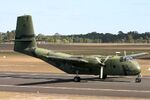 |
Rotary Wing Aircraft[]
| Name | Role | Quantity | Notes | Image |
|---|---|---|---|---|
| Messerschmitt-Bölkow-Blohm Bo 105 | Maritime Reconnaissance | 12 | Bought from Germany in 1982 |  |
| Helibras SH-3 Sea King | Search & Rescue, Utility | 9 | Bought from Brazil in 2009 |  |
Individual Weapons[]
Grenades[]
| Model | Origin | Notes | Image |
|---|---|---|---|
| M67 | Mexico | Fragment/Anti-Personnel |  |
| M18 | CANZ/Mexico | Smoke |  |
Crew Served Weapons[]
Artillery[]
| Model | Quantity | Origin | Role | Image |
|---|---|---|---|---|
| M101 Howitzer | 24 | Mexico/United States | Light Howitzer |  |
| Mortero M60 Mortar | 74 | Mexico | 60 mm Light Mortar | |
| Mortero M81 Mortar | 35 | Mexico | 81 mm Medium Mortar |
Armored Vehicles[]
| Model | Quantity | Origin | Role | Image |
|---|---|---|---|---|
| BMP-2 | 36 | USSR | Amphibious Infantry Fighting Vehicle |  |
| EE-9 Cascavel | 38 | Brazil | Armored Car |  |
| EE-11 Urutu | 62 | Brazil | Amphibious Armored Personnel Carrier |  |
Unarmored Vehicles[]
[]
The Gulf and Caribbean Fleet was founded in 1972 and is headquartered in Tuxpan, Veracruz. It is divided into three Región Naval (Naval Regions); the First Naval Region Northern Gulf, headquartered in Tuxpan, Veracruz; the Third Naval Region Campeche, headquartered in Ciudad del Carmen, Campeche; and the Fifth Naval Region Caribbean, headquartered in Isla Mujeres, Quintana Roo.
[]
The Pacific Fleet was founded in 1972 and is headquartered in Manzanillo, Colima. It is divided into four Región Naval (Naval Regions); the Second Naval Region Northern Pacific, headquartered in Ensenada, Baja California; the Fourth Naval Region Gulf of California, headquartered in Guaymas, Sonora; the Sixth Naval Region Center Pacific, headquartered in Manzanillo, Colima; and the Eight Naval Region South Pacific, headquartered in Acapulco, Guerrero.
Special Operations[]
The Mexican Armed Forces has two independent special operations organizations, one under the Army and one under the Navy. The army branch is dedicated to aerial insertion and covert operation predominantly in air and land environments while the navy branch is dedicated towards maritime environments.
Grupo Aeromóvil de Fuerzas Especiales (Special Forces Airmobile Group)[]
The Army operates the Airmobile Group, predominantly light infantry for insertion behind enemies lines, sabotage, supporting partisans and guerrilla warfare, hostage rescue, and rescue from hostile territories.
[]
The Navy operates a Special Forces group with 800 marines, responsible for covert infiltration, search and rescue or hostage liberation in maritime environments, and supporting in securing beachheads for an amphibious invasion.
Major Military Installations[]
Army[]
Air Force[]
[]
- Gulf and Caribbean Sea Naval Force
- First Naval Region Northern Gulf (RN-1) – Tuxpan, Veracruz
- First Naval Zone (ZN-1) – Ciudad Madero, Tamaulipas
- Naval Sector Matamoros, Tamaulipas
- Naval Sector La Pesca, Tamaulipas
- Third Naval Zone (ZN-3) – Veracruz, Veracruz
- Naval Sector Coatzacoalcos, Veracruz
- First Naval Zone (ZN-1) – Ciudad Madero, Tamaulipas
- Third Naval Region Campeche (RN-3) – Ciudad del Carmen, Campeche
- Fifth Naval Zone (ZN-5) – Frontera, Tabasco
- Seventh Naval Zone (ZN-7) – Lerma, Campeche
- Naval Sector Champoton, Campeche
- Fifth Naval Region Caribbean (RN-5) – Isla Mujeres, Quintana Roo
- Ninth Naval Zone (ZN-9) Yucalpeten, Yucatán
- Eleventh Naval Zone (ZN-11) – Chetumal, Quintana Roo
- Naval Sector Conzumel, Quintana Roo
- First Naval Region Northern Gulf (RN-1) – Tuxpan, Veracruz
- Pacific Naval Force
- Second Naval Region Northern Pacific (RN-2) – Ensenada, Baja California
- Naval sector – Puerto Cortés, Baja California Sur
- Fourth Naval Region (RN-4) – Guaymas, Sonora
- Second Naval Zone (ZN-2) – La Paz, Baja California Sur
- Naval Sector – Santa Rosalía, Baja California Sur
- Naval Sector – Cabo San Lucas, Baja California Sur
- Fourth Naval Zone (ZN-4) – Mazatlán, Sinaloa
- Naval Sector – Puerto Peñasco, Sonora
- Naval Sector – San Felipe, Baja California
- Naval Sector – Topolobampo, Sinaloa
- Second Naval Zone (ZN-2) – La Paz, Baja California Sur
- Sixth Naval Region Center Pacific (RN-6) – Manzanillo, Colima
- Sixth Naval Zone (ZN-6) – San Blas, Nayarit
- Naval Sector – Isla Socorro
- Eight Naval Zone (ZN-8) – Puerto Vallarta, Jalisco
- Tenth Naval Zone (ZN-10) – Lázaro Cárdenas, Michoacán
- Sixth Naval Zone (ZN-6) – San Blas, Nayarit
- Eight Naval Region South Pacific (RN-8) – Acapulco, Guerrero
- Naval Sector Ixtapa – Zihuatanejo, Guerrero
- Twelfth Naval Zone (ZN-12) – Salina Cruz, Oaxaca
- Naval Sector – Huatulco, Oaxaca
- Fourteenth Naval Zone (ZN-14) – Puerto Chiapas, Chiapas
- Second Naval Region Northern Pacific (RN-2) – Ensenada, Baja California
- Shipyards
- Tampico, Tamaulipas: Naval shipyard 1 (ASTIMAR 1)
- Coatzacoalcos, Veracruz: Naval shipyard 2 (ASTIMAR 2)
- Guaymas, Sonora: Naval shipyard 6 (ASTIMAR 6)
- Acapulco, Guerrero: Naval shipyard 18 (ASTIMAR 18)
- Salina Cruz, Oaxaca: Naval shipyard 20 (ASTIMAR 20)
Other Organizations[]
Federal Security Directorate[]
The Federal Security Directorate is the primary intelligence agency of the Mexican government, falling under the jurisdiction of the Secretariat of the Interior. While initially a domestic agency, the directorate has seen expansion into foreign intelligence and counterintelligence operations. This has resulted in criticism of government overreach and several instances of FSD operatives being uncovered in Texas, Guatemala, and Brazil have resulted in occasional diplomatic disputes with foreign nations.
National Commission for Outer Space[]
Mexico’s jurisdiction for space operations were reconsolidated in 2005 under the National Commission for Outer Space, a revival of the pre-Doomsday agency which operated from 1962 through 1976. While space operations were divided between the primarily telecommunications company in Mexico and national universities, efforts to revive satellite communications and scientific experiments were stymied by the disorganization and lack of a centralized structure.
After the announcement of a joint commission between the Commonwealth of Australia and New Zealand and the Union of Sovereign Socialist Republics, the Congress of Mexico announced plans to reform the agency to better allow the country to perform space operations.
The agency (abbreviated NCOS) is responsible for long term strategic planning of a domestic spaceport and rocket program, maintaining Mexican communication satellites, and coordinating with the League of Nations Authority for Space Operations.
Future[]
While the Mexican Armed Forces are one of the most powerful militaries north of the equator, both overall equipment age and assortment of suppliers have hampered the country’s efforts to improve the readiness of the military.
Army[]
The Mexican Army has begun production on an upgraded, heavier version of the Sedena Henschel HWK-11 armored personnel carrier, creating an infantry fighting vehicle. The modern design will utilize the same chassis and will retain the M2 heavy or MG3 general purpose machine gun. The vehicle will be upgraded with improved suspension and an armored turret carrying a 20 mm autocannon, as well as be capable of transporting up to a squad of soldiers in the vehicle.
Production of the prototype was completed in early 2019 and the first batch of twenty were approved by the Mexican Congress in early 2023. Full production is slated to begin in 2025.
The Air Force has announced plans to replace the dwindling inventory of Lockheed T-33 Shooting Star jet trainers between 2028 and 2032. The Aero L-39 Albatross from the USSR, Embraer AMX from Brazil, and SIAI-Marchetti S.211 from the Alpine Confederation are under consideration.
[]
The Navy has announced plans to build four Flight II Río Grijalva-class frigates to replace the five Río Bravo del Norte-class frigate presently in service. Each ship will include an additional pair of AK-630 rotary cannon CIWS to complement the Sea Sparrow surface-to-air missile launcher.
Six Helibras SH-3 Sea King medium lift helicopters are on order from Brazil to supplement the existing inventory. The helicopters are due for delivery in early 2024.
Weapons of Mass Destruction[]
The Mexican Armed Forces do not stockpile or deploy biological, chemical, or nuclear weapons, barring a small quantity of biological agents for testing purposes. The nation was a signatory to the Treaty for the Prohibition of Nuclear Weapons in Latin America and the Caribbean Treaty in 1968 and the Non-Proliferation of Nuclear Weapons in the 1970’s.
The nation has remained opposed to continued and future development and continued deployment of nuclear weapons.
Military Operations[]
Mexico has engaged in peacekeeping missions internationally, supporting the joint CANZ/SAC effort to pacify South Africa as well as Texan security missions in the northern and southeastern parts of the former state. A significant portion of the Armed Forces operate in southern Mexico and northern Guatemala, combating communist insurgents and the Zapatista movement in the state of Chiapas.

















